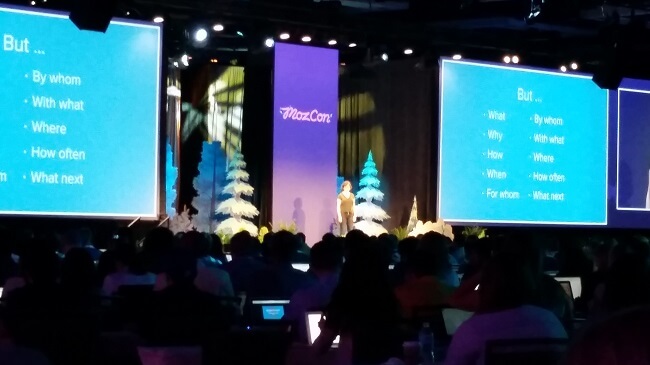DISCLAIMER: This post is written as a live blog from Mozcon. There may be typos and grammar to make my high school English teachers weep. Please excuse those … it’s a fast=paced conference with back-to-back sessions and no time for proofing or even proper writing.

Kristina Halvorson from BrainTraffic.com takes the stage after a short break to chat content strategy. She starts by discussing the “frightening” books out in 2009 when she wrote her first book and why she started writing for real people o understand.
Focusing content on “why”. Asking what the content is for and how critical it is. Understanding if the content if for links, traffic, to announce a new service, etc. is critical
Next – understand the timeline and no … “yesterday: is not an answer.
Also – who is it for? What is the demographic?
And of course – who is going to write it?
And maybe – where is it going to go?
And unfortunately – what’s next? Too few people actually think about how it’s to be organized and what the long term strategy is. Understanding that is critical to a proper deployment.
She references Joe Pulizzi’s book “Epic Content Marketing”. It’s a good book by the way. 🙂
A lesson for everyone is that content shouldn’t just pitch your product or brand. Also, just pumping out content doesn’t work. The conversation about content strategy needs to be about creating good content, not more content.
She’s talking now about creating a core strategy and letting that define the actions. While we might love tests and opportunity, it all needs to come back to the core strategy. We need to look at:
Structure – make it findable
Substance – Fulfills business objectives and audience needs.
And functionally …
Workflow – roles, structure, processes ad tools
Governance – policies, standards and guidelines
A key graphic she uses from IBM is on Content Strategy For User Experience.
And now it needs to be adaptive as well. We need that content to display properly across different devices.
An area she doesn’t have time to get into is Enterprise Content Strategy.
She does have time for “getting it done”:
1 – Assessment of situation and needs, analysis and strategy development
2 – Architecture and editorial
3 – Implementation
4 – Maintenance (keeping it rolling)
Looking at assessment …
Discovery Checklist:
Business objectives
Project objectives
User research
Stakeholder interviews
Usability
Current technology
etc.
When developing the checklist questions look at every angle. Which takes us to …
Strategy: Deliver the right content to the right people in the right place. If you don’t hit all the marks it’s not a strategy but there are often many ways to catch that fish.
There was a lot more to the session but a lot of the real useful data was slide-based so alas … I don’t’ have time for you though the book the Content Strategy Toolkit apparently has some free chapters on the web and covers a lot of the key points discussed regarding the development of strategy. I know I’ll be looking into it.
I love her point about marketers getting hit with the bright shiny object syndrome. It’s true. Pinterest is an example, it was shiny and new and brands adopted it but did they need to? Most didn’t.
To get the C-Level on board talk pain points. Talk about what’s wrong and start there.
And of course, don’t make decisions based on assumptions. It can just be asking questions with a few people around a table, it doesn’t have to be a full research project.
In Q&A she answers metrics and she doesn’t like Lies and shares and finds them a cop-out (being the only metric we have so we lean on it). She feels the focus should be on whether that content solves the user intent and what to users feel about it.
